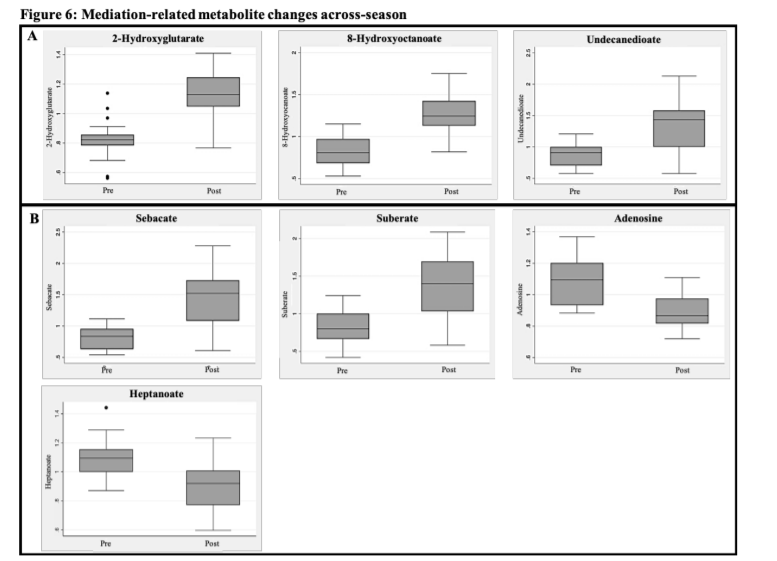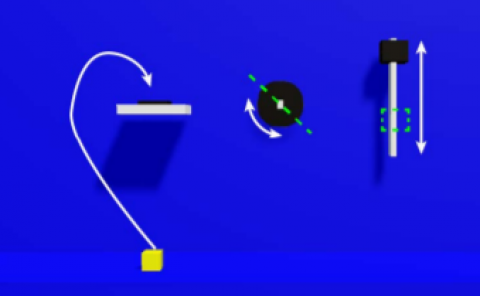Metabolomic measures of altered energy metabolism mediate the relationship of inflammatory miRNAs to motor control in collegiate football athletes
PubDate: Jun 2020
Teams: Northwestern University;Orlando Regional Medical Cente;Purdue University;Pennsylvania State University;Massachusetts General Hospital and Harvard School of Medicine
Writers: Nicole L. Vike, Sumra Bari, Khrystyna Stetsiv, Linda Papa, Eric A. Nauman, Thomas M. Talavage, Semyon Slobounov, Hans C. Breiter

Abstract
Recent research has shown there can be detrimental neurological effects of short- and long-term exposure to contact sports. In the present study, metabolomic profiling was combined with inflammatory miRNA quantification, computational behavior with virtual reality (VR) testing of motor control, and head collision event monitoring to explore trans-omic and collision effects on human behavior across a season of players on a collegiate American football team. We integrated permutation-based statistics with mediation analyses to test complex, directional relationships between miRNAs, metabolites, and VR task performance. Fourteen significant mediations (metabolite = mediator; miRNA = independent variable; VR score = dependent variable) were discovered at preseason (N=6) and across season (N=8) with Sobel p-values less than or equal to 0.05 and with total effects at or exceeding 50%. The majority of mediation findings involved long to medium chain fatty acids (2-HG, 8-HOA, UND, sebacate, suberate, and heptanoate). In parallel, TCA metabolites were found to be significantly decreased at postseason relative to preseason. HAEs were associated with metabolomic measures and miRNA levels across-season. Together, these observations suggest a state of chronic HAE-induced neuroinflammation (as evidence by elevated miRNAs) and mitochondrial dysfunction (as observed by abnormal FAs and TCA metabolites) that together produce subtle changes in neurological function (as observed by impaired motor control behavior). These findings point to a shift in mitochondrial metabolism, away from mitochondria function, consistent with other illnesses classified as mitochondrial disorders, suggesting a plausible mechanism underlying HAEs in contact sports and potential avenue for treatment intervention.

